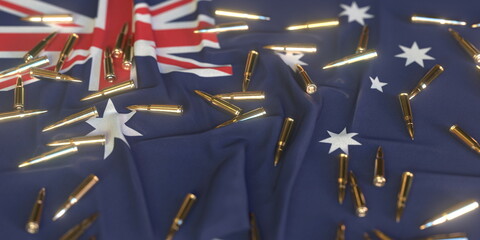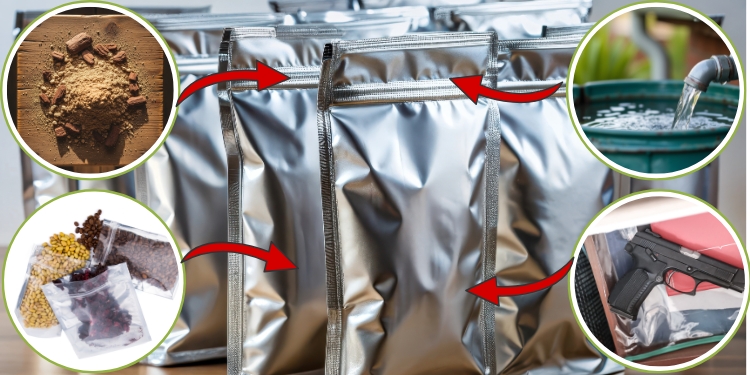The Ultimate Guide to Hunting Knives

It doesn’t matter if you’re planning to spend $30 or $300 on a hunting knife, you can find a good one if you know what to look for. There’s a lot of hype and lore surround knives, and I’m going to cut right through it all with my five criteria for the perfect hunting knife.
I didn’t pull the criteria out of thin air. It’s based on my experience making, testing, and collecting knives and using them in the field. I also have a handful of recommended knives based on my knife testing and in the field use.
1. Blade Shape and Length
The drop point, in all its flavors, is the perfect blade shape for a hunting knife. Drop points have a good amount of belly, but not too much. As you roll your wrist to make a skinning cut, a little curve in a blade helps you utilize more of the blade length — distributing the wear and increasing efficiency.
The first cut while field dressing is one of the most critical. As you’re zipping open the body cavity, you need to control the point of your knife to avoid nicking an organ. It’s easy to know exactly where the point of your knife is with a drop point.
Some blade shapes to avoid are anything that has a trailing point and Wharncliffe or sheepsfoot blades. A trailing point is when the point is higher than the spine and it’s easy to lose track of that trailing point while field dressing. Wharncliffe or sheepsfoot blades don’t have enough belly for efficient skinning.
I like my hunting knives to have a 2.5 to 4-inch blade length. I mostly hunt whitetails and turkeys, but I talked to Outdoor Life staff writer Tyler Freel who lives in Fairbanks to see what blade length he prefers for moose and grizzly. He also likes small blades between 3 and 4 inches. So you don’t need a big knife, even for big game.
2. Cutting Performance
A knife maker can create a knife for different cutting applications based on the stock thickness and the grind they choose. Let’s say you want a durable knife that can carve wood. A thicker blade steel around 3/16-inch and a scandi or convex saber grind would work well for that application.
For hunting knives, you want a knife that slice like a kitchen knife. That’s why I like hunting knives to have thin steel (1/8 inch or thinner) and a full flat grind. The combination of thin steel and a high grind makes for a knife that slices through meat and tendons with very little effort.
3. Steel
There isn’t a magic knife steel out there and they all have pros and cons. The key to choosing the right steel for you is figuring out what you need in terms of corrosion resistance, toughness, edge retention, and ease of resharpening.
For example I like knives that have good corrosion resistance and edge retention for hunting. Field dressing doesn’t require toughness and I’m willing to give up that quality to get better edge retention and corrosion. A steel like S90V would be ideal for my needs and a steel like D2 wouldn’t be a great choice.
Dr. Larrin Thomas, a metallurgist, has done extensive knife steel testing and has a helpful steel comparison guide. I recommend checking it out as a starting point for finding the right steel for you.
4. Grip
Most knives are designed to be held like a hammer, but when you’re field dressing and quartering you end up holding a knife with all types of grips. My pet peeve is deep finger choils and sharp angles that force you to hold a knife in one way. An ideal hunting knife grip is simple and has good traction even when bloody.
My favorite grip material is G10 due to its traction and its ease of cleaning. My least favorite is cord wrapped handles, because while they have good traction, they are a major pain to clean.
5. Sheath
I hate a good knife in a bad sheath. I make leather sheaths for my knives, but I actually prefer Kydex for pure practicality in a hunting scenario. They’re easy to clean with soap and water and you don’t have to take care of them like leather. An ideal sheath has good retention, but the knife is easy to remove.
My Favorite Hunting Knives
White River Knives Small Game Hunter
See It
Pros
- Sculpted handle
- Excellent for slicing and piercing
- Works well for small and big game
Cons
- Some hunters might want a slightly longer blade
Key Features
-
Blade Steel:
S35VN (58-60 HRC) or MagnaCut (62-64 HRC) -
Handle Materials:
Micarta -
Overall Length:
7.25 inches -
Blade Length:
2.62 inches -
Blade Thickness:
.130 inch -
Grind:
Flat -
Kydex Sheath -
Made in USA -
Price:
$160 (S35VN) or $180 (MagnaCut)
This is a mullet knife: party in the back and business up front. The big handle allows a full grip and its coke-bottle shape makes for comfortable ergonomics. Its sculpted grip conforms to your hand with a hammer grip, thumb on the spine, or index finger on the spine. I like the ledge at the front of the handle, which is the perfect spot to place your thumb when using an index-finger-on-the-spine grip.
While this knife is called the Small Game Hunter, it by no means is limited to squirrels and rabbits. The 2.6-inch blade is all I need for field dressing and quartering a deer. This year, I lent it to a professional deer butcher who cuts up hundreds of animals per year, and he was impressed with this knife’s cutting ability and ergonomics. If you like the overall design, but want a larger blade I recommend looking at the 3.5-inch White River Hunter.
Lishen Little Canuck
See It
Pros
- Great fit and finish
- Very slicey
Key Features
-
$250-$300 -
3.5-inch blade -
3.2 ounces -
AEBL blade steel -
Made in USA
I’ve been sorely disappointed by several expensive hunting knives. But the Lishen Little Canuck has excellent fit and finish, cutting performance, and provides good value for the money. Lishen uses several different blade steels and handle materials for his knives, and those factors affect the retail price. You can expect to pay around $250 to $300 for a Little Canuck depending on the materials used. Mine is in dessert ironwood and AEB-L. I like AEB-L for its excellent corrosion resistance and it strikes a nice balance of holding an edge reasonably well while still being easy to resharpen.
Buck Alpha Scout Select
See It
Pros
- Comfortable handle
- Good value
Key Features
-
$68 -
2 ⅞-inch blade -
420 HC blade -
2.8 ounces -
Made in USA (Imported Sheath)
The Buck Alpha Scout Select is made in the USA and costs $68. It cuts well, has decent steel, and I like its ergonomics. The sheath is this knife’s weak point. Securing the knife in the sheath takes two hands and I’ve yet to get it buttoned up in one try.
Benchmade Flyway

See It
Pros
- Good ergonomics
- Good edge retention
- Light
Cons
- Not ideal for hard-use tasks
Key Features
-
Steel:
CPM-154 at 58-61 HRC -
Blade Length:
2.7 inches -
Blade Thickness:
3/32 inches -
Weight:
2.1 ounces -
G10 Handles -
14-degree bevel -
Kydex sheath -
Price:
$180
I’ve put this little knife to work got on whitetails and birds over the last few seasons. It’s one of my favorite hunting knife designs and while it excels at quickly dressing birds, it works equally well as a field dressing knife.
According to Knife Steel Nerds, CPM 154 is tougher than S30V and known for its good edge retention. That toughness makes it a great steel choice for a thin knife (read our guide to knife steel here). In one weekend I used it to field dress and butcher an entire deer without touching up the blade. Then two days later, I used it to butcher pheasants and quail. After my weekend of butchering, the knife could still push cut thin paper.
The blade has a slight drop and plenty of belly for skinning. While field dressing, the fine point and slight drop were perfect for making the initial cut up the deer’s body. It’s also great for making skinning cuts where the knife edge is facing out as you slide the knife under the skin. The length makes it easy to control and when you’re reaching into a chest cavity, it’s easy to know where your knife is. For such a small blade it has a lot of belly, which is great for skinning and deboning.
I rarely hold a skinning knife like a hammer or as I would a survival knife when making a feather stick. I use a pinch grip with my index finger on the knife’s spine. The Flyway’s sculpted G10 grip and spine jimping work well for that method. Especially the jimping that’s three quarters of the way down the blade. It serves not only to prevent slipping, but as an index point so you know where your finger is in relation to the point, even in the dark.
ESEE Ashley Game Knife
See It
Pros
- Durable
- Good cutter for its steel thickness
- Excellent ergonomics
Cons
- Steel is too thick for detail work
Key Features
-
$160 -
3.5 inch blade -
S35VN blade steel -
5.2 ounces -
0.150 inch -
Made in USA
If you need a knife that can take a beating, but also field dress, quarter, and de-bone any animal, here’s the knife for you. I batoned and carved wood with this knife and generally mistreated it. The edge didn’t take any damage and in my cut test, it held its own against thinner knives. When deboning, you’ll notice this knife’s steel thickness, but it can get the job done. The grip is one of my favorites of the test and its micarta scales are exceptionally grippy.
See It
Pros
- Easy to replace blades
- Good blade shape
Cons
- Heavier than some replaceable blade knives
Key Features
-
Blade Length:
3.5 inches -
Blade Steel:
Japanese 420J2 Stainless -
Nylon pouch -
Weight:
6.4 ounces -
Price:
$40
A few years ago I found myself on the side of a mountain with five others trying to break down two elk as quickly as possible. We were hoping to get out of there before tempting the two grizzly bears just a ridge over. Everyone had different replaceable blade knives, but about halfway through the first elk it was obvious, which of the knives was the best — the RazorPro L. Its blades were the easiest to replace and the mounting system was trouble free. Other knives got gummed up and the blades came off, but the RazorPro L chugged through deboning the two elk flawlessly.
While the RazorPro L isn’t the lightest replaceable blade knife. It’s the most trouble-free design I’ve used. I don’t have blades pop off or break and can make it through an animal on one blade. When it’s time to swap a blade you just press the button, slide the blade out, and slide a new blade in. The rubberized handle stays grippy when your hands are covered in blood. The 3.5-inch blade is a good length for balancing maneuverability and cutting efficiency.
Tyto Hollow Bone
See It
Pros
- Crazy light
- Good ergonomics
- Sturdy blade
Cons
- Blades are difficult to change
Key Features
-
$165 -
3.1 inch blade -
1.4 ounces with sheath -
Knife only weighs 0.8 ounces -
Made of grade 5 titanium -
Uses size 60 and 22 blades
The Tyto Hollow Bone is by far the lightest knife I’ve ever tested. I like that Tyto managed to drop this knife’s weight without sacrificing the things that matter like ergonomics and a quality blade. Your typical size 60 blade is thin from edge to spine, and I’ve had several break while using them to quarter an animal. The Hollow Bone blades are wider and more robust so they won’t be as delicate. Replacing blades on the Hollow Bone isn’t as easy as the Outdoor Edge Razor Pro L, but that’s the trade off for a knife that weighs less than a pencil.
Read the full article here









